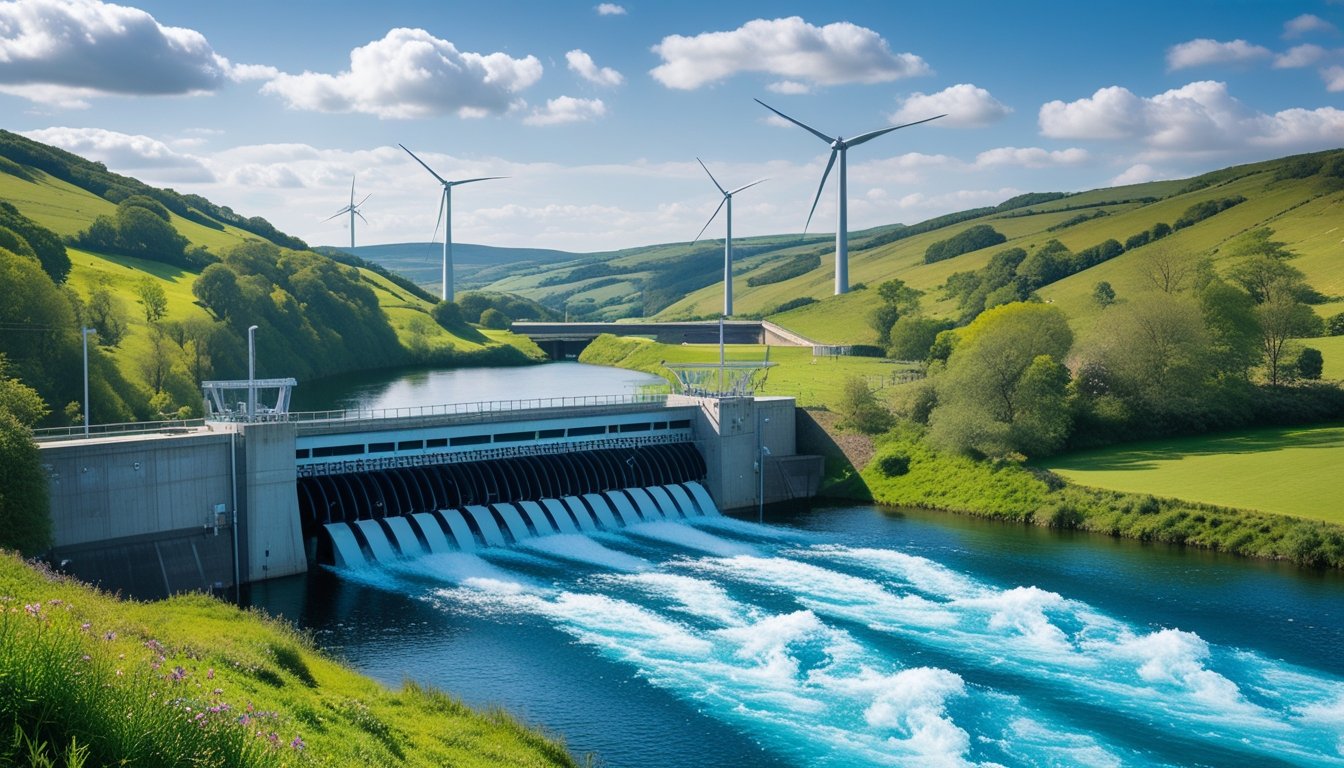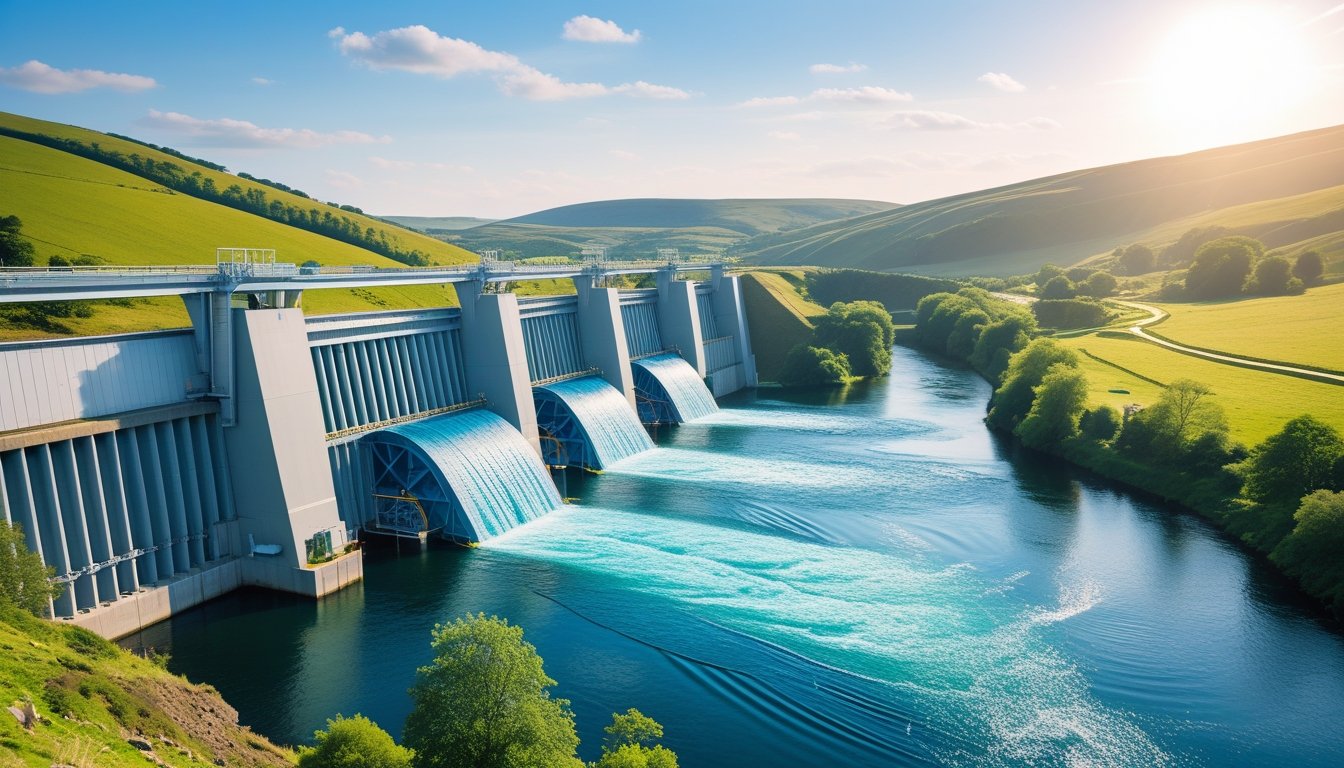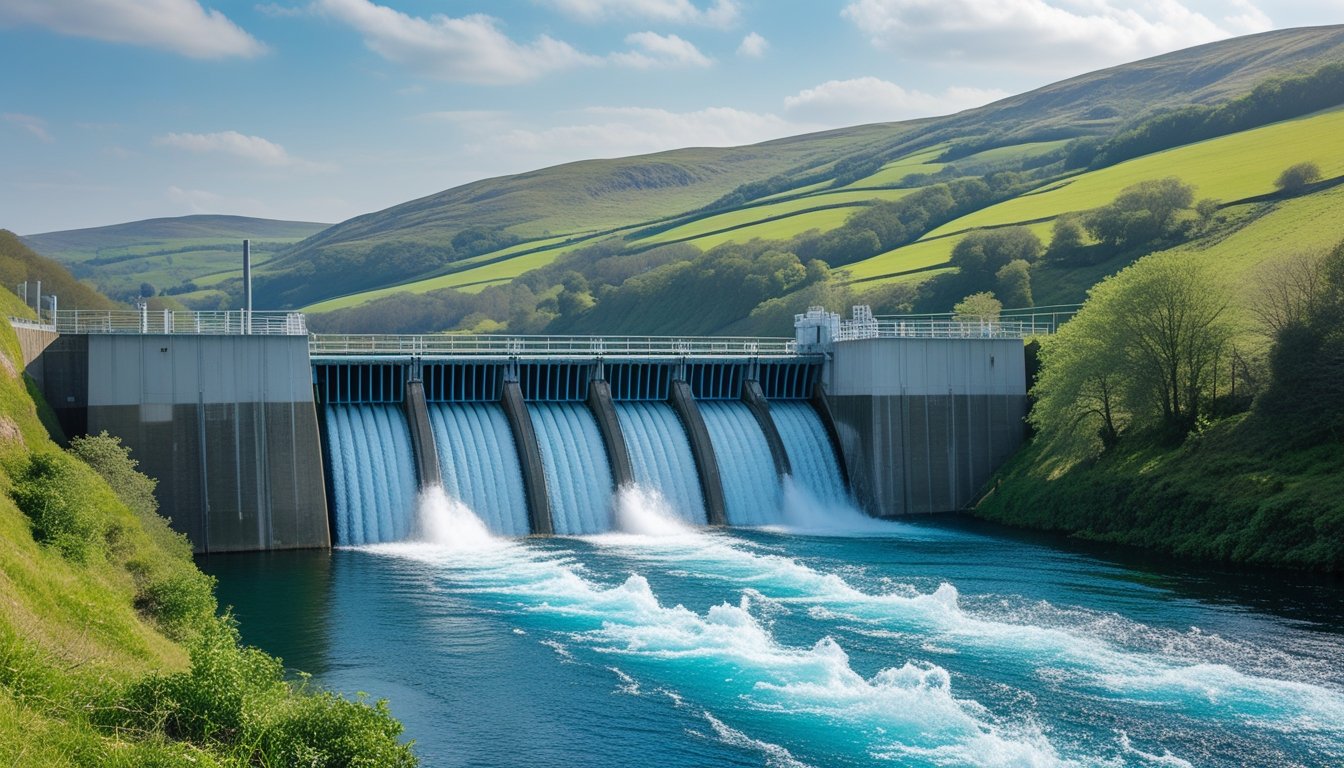Late updated: 14 Jun 2025 13:06
Written by: Eleanor Hartman
The Benefits Of Hydroelectric Power In The UK: A Sustainable Energy Solution
Hydroelectric power stands as a cornerstone in the drive towards a sustainable energy future in the UK. This renewable resource offers a reliable energy source and plays a critical role in stabilising our power grid. Hydroelectric energy not only contributes to our energy mix but is also pivotal in ensuring energy security when other renewables, like solar and wind, are less effective.

As we expand our hydropower infrastructure, the number of plants across the UK has risen significantly. These developments showcase hydroelectric power’s potential to support both land reclamation and irrigation, helping us manage resources more efficiently during periods of drought. In Scotland alone, a substantial portion of our hydroelectric power is generated, highlighting its importance in our energy landscape.
The environmental benefits associated with hydroelectric power cannot be overstated. By utilising this clean and traditional source of energy, we not only reduce carbon footprints but also foster an era of continuous innovation and energy diversification. This innovation leads to a greener, more secure future for our nation.
Key Takeaways
- Hydroelectric power is a reliable renewable energy source in the UK.
- It plays a vital role in balancing and stabilising the energy grid.
- The expansion of hydropower plants highlights its growing importance.
How Hydroelectric Power Works in the UK
Hydroelectric power converts the kinetic energy of flowing water into electricity, playing a vital role in the UK's renewable energy portfolio. It employs various facility types, including impoundment, run-of-river, and micro-hydro systems, to meet diverse energy needs.
Fundamental Principles of Hydroelectricity
In hydroelectric systems, we harness potential energy stored in water at a higher elevation by converting it into kinetic energy as the water descends. This energy drives turbines connected to generators. The process efficiently transforms mechanical energy into electricity, providing a renewable source of power with minimal environmental impact. Control over water flow enables electricity generation that matches demand, ensuring a stable energy supply. This adaptability is crucial in supplementing other renewables like solar and wind.
Types of Hydroelectric Facilities
In the UK, we use several types of hydroelectric facilities to suit varying landscapes and energy requirements. Impoundment facilities, commonly known as hydroelectric dams, store large volumes of water to produce power on demand. Run-of-river schemes capture energy from flowing streams without significant storage, offering a less intrusive option. Small-scale micro-hydro systems contribute to microgeneration, proving especially useful in remote areas. They have minimal environmental impact, making them attractive for sustainable local energy solutions. Each type serves different aspects of the country's energy infrastructure.
Role in British Energy Generation
Hydroelectricity accounts for a modest percentage of UK energy but is instrumental in maintaining grid stability. With over 1,500 hydropower plants, the industry supports a secure and flexible electricity supply. These plants are predominantly located in Scotland and Wales, exploiting natural topography for efficient energy production. Managed by organisations such as the British Hydropower Association, hydroelectric projects bolster economic and technological advancement. Despite its smaller share compared to other renewables, hydroelectric power is crucial for our net-zero transition. It provides reliable, continuous power generation, especially when solar and wind resources are intermittent.
Key Benefits and Broader Impact of Hydroelectric Power

Hydroelectric power offers significant advantages, making it a valuable renewable energy source. It supports environmental sustainability, provides economic benefits for communities, and fosters technological innovation.
Environmental Sustainability
Hydroelectric power is a clean energy that minimises greenhouse gas emissions. Unlike fossil fuels, it harnesses the power of fast-flowing water, making it inherently more environmentally friendly. This can play a critical role in combating climate change by reducing our carbon footprint.
Additionally, hydroelectric projects often help in managing water resources effectively. By providing flood control and enabling irrigation, they contribute to both energy security and biodiversity conservation, addressing several environmental concerns at once.
Economic and Community Advantages
The economic benefits of hydroelectric power are robust. Pumped storage systems enhance energy security by saving electricity for peak demand times. Feed-in tariffs can encourage more investment in these projects, providing sustainable income streams.
In terms of community impact, rural areas benefit through job creation and infrastructure improvement. Rural communities can gain new opportunities in construction and maintenance. These projects often help with land reclamation, making them multifaceted assets for local development.
Technological Progress and Future Potential
From a technological perspective, hydroelectric power is at the forefront of energy-efficient innovations. Unlike traditional power sources, it has a rapid start-up time, allowing near-instantaneous adaptation to grid demands.
Tidal energy represents a potential avenue for expansion in the UK. By integrating cutting-edge technologies into existing systems, we can further maximise efficiency. These advancements not only ensure a consistent supply of electrical energy but also highlight the potential for future improvements in renewable energy sectors.
Frequently Asked Questions

In the United Kingdom, hydroelectric power plays a crucial role in reducing carbon emissions and promoting sustainable energy. It's important to explore its advantages, contribution to the renewable energy mix, future potential, environmental impacts, operational mechanics, and its pros and cons.
What are the primary advantages of using hydroelectric power in the United Kingdom?
Hydroelectric power provides a reliable and renewable energy source, helping to reduce dependence on fossil fuels. It offers low operating costs once constructed and contributes to energy security.
How has hydroelectric power contributed to the UK's renewable energy mix?
Hydropower accounts for about 2.2% of the UK's renewable energy sources. Even though it is a smaller percentage compared to other renewables, it is a stable and consistent energy source.
What is the future potential for expanding hydroelectric power within the UK energy sector?
With government support and incentives, there's potential for further development of hydroelectric projects, especially in Scotland. By capitalising on natural rainfall and water flows, the UK could increase its hydroelectric capacity.
What are some potential environmental impacts associated with hydroelectric power plants in the UK?
While hydroelectric power is clean, its development can impact local ecosystems, particularly aquatic life. Changes to river systems and water quality can also occur, necessitating careful planning and management.
How does hydroelectric power generation work, and what makes it a viable energy option for the UK?
Hydroelectric power harnesses the energy from flowing water using turbines and generators. This process is efficient and produces electricity with minimal greenhouse gas emissions, making it a viable option for the UK.
Can you outline the comparison between the benefits and drawbacks of hydroelectric power in the United Kingdom?
Hydropower's benefits include renewable energy production, reliability, and low emissions. However, drawbacks can include ecological impact and high initial construction costs. Evaluating these factors helps us understand its place within the UK's energy strategy.